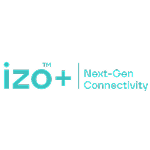Witness the potential of our solutions
Experience a transformative journey forward by harnessing the power of our carefully
crafted tools and trials.
.png)
Free Trials
.png)
Demo
.png)
Surveys
.png)
Assessments
.png)
Calculators

Uncover innovative solutions, get hands-on with our Network, Cloud, Security, and IoT Fabric.
Category
Product & Solutions
30%
Reduction in TCO while maintaining local internet breakout flexibility
Take the assessment to determine where you stand in your WAN journey:
- See how much you can save by moving from MPLS to a Hybrid WAN using our TCO calculator
- Just enter your network details to get a quick 3-year cost comparison
- Make smarter decisions for your network transformation with clear, data-driven insights
99.9%
First time right deployments
Customised to your current environment, our team of skilled solution architects can help you unleash SD-WAN capabilities to its full potential:
- Book a customised IZO™+ SD-WAN demo to see how it can solve your specific network challenges
- Explore features tailored to your business needs, from performance to security
- Get expert advice and leverage SD-WAN best practices for optimal network performance
300K+
Global installations completed
Sign up for a no-cost, 30-day Microsoft Teams trial.
Get a risk-free production pilot with unlimited global users, that can scale directly to full production. Requires O365 E3 + Phone System or E5, a registered domain, and admin support for setup.
60 Billion
Annual transactions
Are your customer interactions delivering maximum value?
Take our quick self-assessment to uncover insights and unlock new growth opportunities for your business. It's fast, easy, and designed to help you enhance every customer touchpoint.
20+
Services covered
Stay in control of your cloud costs.
Use our cloud pricing calculator to estimate your expenses across services. It’s quick, intuitive, and helps you make smarter, budget-friendly cloud decisions before you even deploy.
99%
of IT leaders surveyed are cloud inspired
Is your cloud strategy ready for tomorrow?
Take our cloud maturity survey to uncover your current position and identify steps to accelerate transformation. It’s fast, insightful, and built to guide your cloud journey with clarity.
600+ MNOs
Curious how global IoT connectivity works in real life?
Start your free trial to explore our MOVE™ platform. It’s secure, scalable, and gives you full access to test device management, analytics, and more, across 200+ countries.
14
day free trial
Experience the transformative potential of multi-cloud connectivity by signing up on our self-service portal.
Test how you can securely connect to leading cloud providers with high performance.
Explore simplified multi-cloud networking tailored to your business needs.
378K+
Webex™ users served
Sign up for your 30-day Cisco Webex™ free trial - no cost, no hassle.
Enjoy a fully supported, optimised solution with a custom microsite, up to 100 users, 2 Webex™ devices, and 24/7 global helpdesk support. Fill out the form to get started now!
Leading Tier-1
Voice provider for PSTN and mobile coverage
Experience seamless communication with our limited time offer on cloud calling. Unlock flexible, cost-effective collaboration for all employees with our cloud calling plans.
Leading Tier-1
Voice provider for PSTN and mobile coverage
Explore our secure desktop and mobile dialer services with voice, messaging, Cloud PBX, and global data roaming. See how it fits IT, finance, or hospitality with our offer.
99%
SD-WAN adopters rely on service partners
Feeling confident about your network transformation journey? Take the assessment to find out how you benchmark against your peers for SD-WAN, Internet WAN and Network-as-a-Service:
- Assess your current network capabilities and identify areas for improvement
- Gain personalised recommendations to enhance agility, security, and performance
- Align your network strategy with industry’s best practices for optimal digital transformation
50 vCPUs free
Want to test and deploy edge apps in real-world environments?
Our edge testbed gives you a ready-to-use sandbox with compute, orchestration, and real-time visibility. It's fast, flexible, and perfect for innovation at the edge, without the infrastructure hassle.
<10ms latency
Stay ahead with ultra-low latency and dedicated bandwidth tailored for high-performance use cases like robotics, smart factories, and AR/VR applications.
Tata Communications Private 5G gives enterprises full control over their connectivity, ensuring security, reliability, and high availability at every level.
Built for Industry 4.0, our private network supports mission-critical operations across manufacturing, logistics, automotive, and more, powering innovation at the edge.
4 Mn
Fraud call attempts blocked per month
Discover how much you can save with our Microsoft Teams savings calculator. Estimate cost reductions on calling, infrastructure, and collaboration by switching to MS Teams with voice. Quick, easy, and tailored for your business, try it now!
378K+
Webex™ users served
Discover how much you can save with our Cisco savings calculator. Estimate cost reductions on calling, infrastructure, and collaboration by switching to Cisco with voice. Quick, easy, and tailored for your business, try it now!
15
Minute survey
Is your cloud security strategy keeping pace with evolving threats?
Take our quick assessment to uncover gaps and receive tailored recommendations. It's fast, insightful, and designed to strengthen your multi-cloud security posture.
Global reach in 150+ countries
Do you really know what state your network is in?
Evaluate your WAN's readiness and uncover opportunities to enhance agility.
- Assess your current network capabilities and identify areas for improvement
- Gain insights to align your WAN strategy with evolving business demands
- Receive tailored recommendations to support your digital transformation journey
80%
Improvement in ROI and adoption
Take our survey to assess your UCC maturity across four key pillars: technology integration, employee adoption, workflow optimization, and ROI measurement. Discover actionable insights to future-proof your communication strategy.
90+
Internet ecosystem partners
Evaluate your organisation's internet infrastructure maturity with this survey to identify gaps and receive tailored recommendations for enhancing performance and security:
- Assess your current internet capabilities and pinpoint areas for improvement
- Gain insights to align your internet strategy with evolving business demands
- Receive personalised recommendations to support your digital transformation journey
10
Minute SSE assessment
Assess your enterprise Security Service Edge (SSE) readiness. Gain strategic insights into your network security posture, identify opportunities for improvement, and build a roadmap for a successful SSE implementation.
- Receive a personalised report categorising your SSE maturity as Explorer, Intermediate, or Maestro
- Gain strategic insights to optimise your security investments and prepare for future network security challenges
- Leverage tailored recommendations to enhance your organisation's security posture and support your digital transformation journey
277
Days to detect a threat?
Assess your organisation’s readiness to tackle cyber threats. Find out where your organisation is on the threat management maturity scale:
- Assess your organisation's cyberthreat exposure across remote work, mobile, and digital assets
- Identify vulnerabilities and gaps in your current threat management strategy
- Get personalised recommendations to boost your security posture and achieve 360° readiness
No.1
International voice carrier
Explore the global reach of Tata Communications Kaleyra™ UCaaS. See where services are available worldwide and filter by ITFS, PSTN, UIFN, and LNS. Experience seamless global voice connectivity, interactive, and in real-time.
190+
Countries
Explore Tata Communications' global reach through an intuitive, interactive 3D map showcasing undersea cables, PoPs, and data centers worldwide.
Visualise world’s largest wholly-owned subsea cable network that spans continents, enabling resilient and scalable enterprise connectivity.
See how our network powers digital infrastructure for businesses in over 190 countries.
10 mins
To evaluate your SOC maturity
Is your SOC ready to manage today’s threat landscape?
Assess your SOC's maturity level and safeguard your digital assets. This self-assessment survey will help you uncover your strengths and opportunities for improvement.
Get a preliminary understanding to help you safeguard digital assets and build a roadmap for achieving your security goals.
10
Minutes to set up cloud connection
Unmatched control, visibility and ease of managing your multi cloud environment. Connect to multiple cloud providers without any hassle through a single, user-friendly platform that offers real time provisioning.
25%
Lower cloud egress costs
Estimate your cloud connectivity costs across multiple providers and regions with our cost savings calculator. Compare connectivity costs across cloud providers to identify potential savings and optimise your multi-cloud strategy.
56%
Organisations faced VPN-related cyberattacks last year
Experience the future of secure access with live ZTNA demo:
- Visualise the authentication process employees will go through from on-campus or remote locations
- Explore secure access controls that provide user profile-based access to business and cloud-based applications
- Strengthen web access control with comprehensive monitoring of all internet traffic
80%
reduction in deployment & Time to Market
See how our comprehensive managed services, including assessment, migration, deployment, and management, can help you gain faster onboarding, complete visibility, and smarter decision making.
Sorry! We couldn’t find any matches!
Please check the spelling or try searching for something else
What’s next?
Explore Our Solutions
Discover products, use cases, and capabilities tailored to your business.
Exclusively for you
Stay updated on our Digital Fabric and other platforms and solutions!





